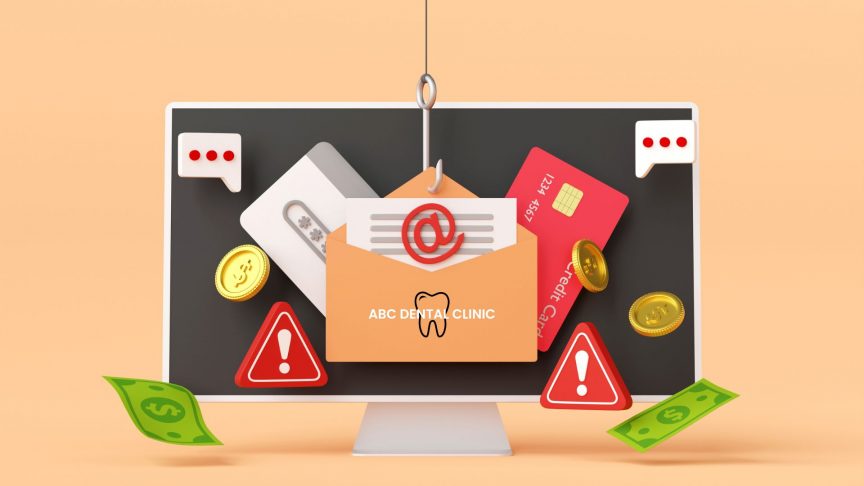Dental practices, just like any other business, are vulnerable to a variety of cyber threats. The most common among these are phishing attacks which take several forms. By familiarizing yourself with these methods, you can safeguard your practice and your patient’s sensitive information.
Although formal basic dental security awareness training is required for compliance, here’s a good start.
Let’s dive in and explore these threats:
The Menace of Phishing
Phishing is a deceptive practice where cybercriminals impersonate reputable companies via emails to lure individuals into divulging personal details. Imagine this: you’re working at your dental practice and you receive an email.
It seems to come from your regular dental supply company, claiming there’s a ‘problem’ with your account and asking you to log in using a link provided. Unbeknownst to you, this link directs you to a fraudulent site created to pilfer your login credentials.
Spear Phishing: A Pointed Threat
Spear phishing is a more personalized form of phishing. Picture your office manager receiving an email appearing to be from you, the practice owner.
The email requests sensitive patient data, citing specific patients or situations at the practice to make it seem more authentic. However, this email is not from you – it’s from a cybercriminal aiming to misuse your patient data.
Whaling: Chasing the Big Fish
Whaling is an advanced phishing tactic that targets the ‘big fish’, i.e., high-ranking individuals within an organization. In the context of a dental practice, this could involve an email impersonating a regulatory authority like the American Dental Association.
The fraudulent email could claim ‘unpaid dues’ or fines, tricking the practice owner into making a payment under the guise of urgency and authority.
Pretexting: A Well-Constructed Lie
Pretexting is a crafty form of social engineering that involves spinning a convincing false scenario to extract sensitive information. For instance, your dental practice could receive a call from a scammer claiming to represent a new dental insurance company.
They offer a ‘better deal’, but need patient details to proceed. The goal here is to trick your staff into sharing confidential patient information.
Business Email Compromise (BEC) Scams: Deception at Its Peak
BEC scams are especially insidious. They involve an attacker pretending to be a trusted business associate, like a supplier of dental products.
The scammer may hack into or mimic the supplier’s email, sending a fraudulent invoice with modified bank details. An unsuspecting staff member might unknowingly make a payment into the scammer’s account.
Smishing: SMS-based Trickery
Smishing is a variant of phishing that uses text messages. In a typical scenario, an employee might receive a text purportedly from a dental supply company.
The message claims there’s an issue with their account that can be ‘fixed’ by clicking on a provided link. However, this link actually leads to a fake site designed to steal login information.
Vishing: Voice-activated Scams
Vishing involves fraudulent phone calls. An example would be a call from someone claiming to represent your bank or credit card company, warning about suspicious charges on the practice’s account.
The caller would then ask for verification details, aiming to access sensitive financial information.
All these threats underscore the importance of vigilance and robust security measures in dental practices. Each method carries its unique dangers but shares a common goal: tricking the recipient into exposing sensitive information or making unauthorized transactions.
Regular staff education about these cyber threats can be your most potent weapon against these digital predators.
Get Training for Your Team
Easy, affordable cybersecurity awareness training is available for dental teams through myla Training Co. Check out the Cybersecurity Essentials for Dental Teams course that is designed specifically for dental practices.

